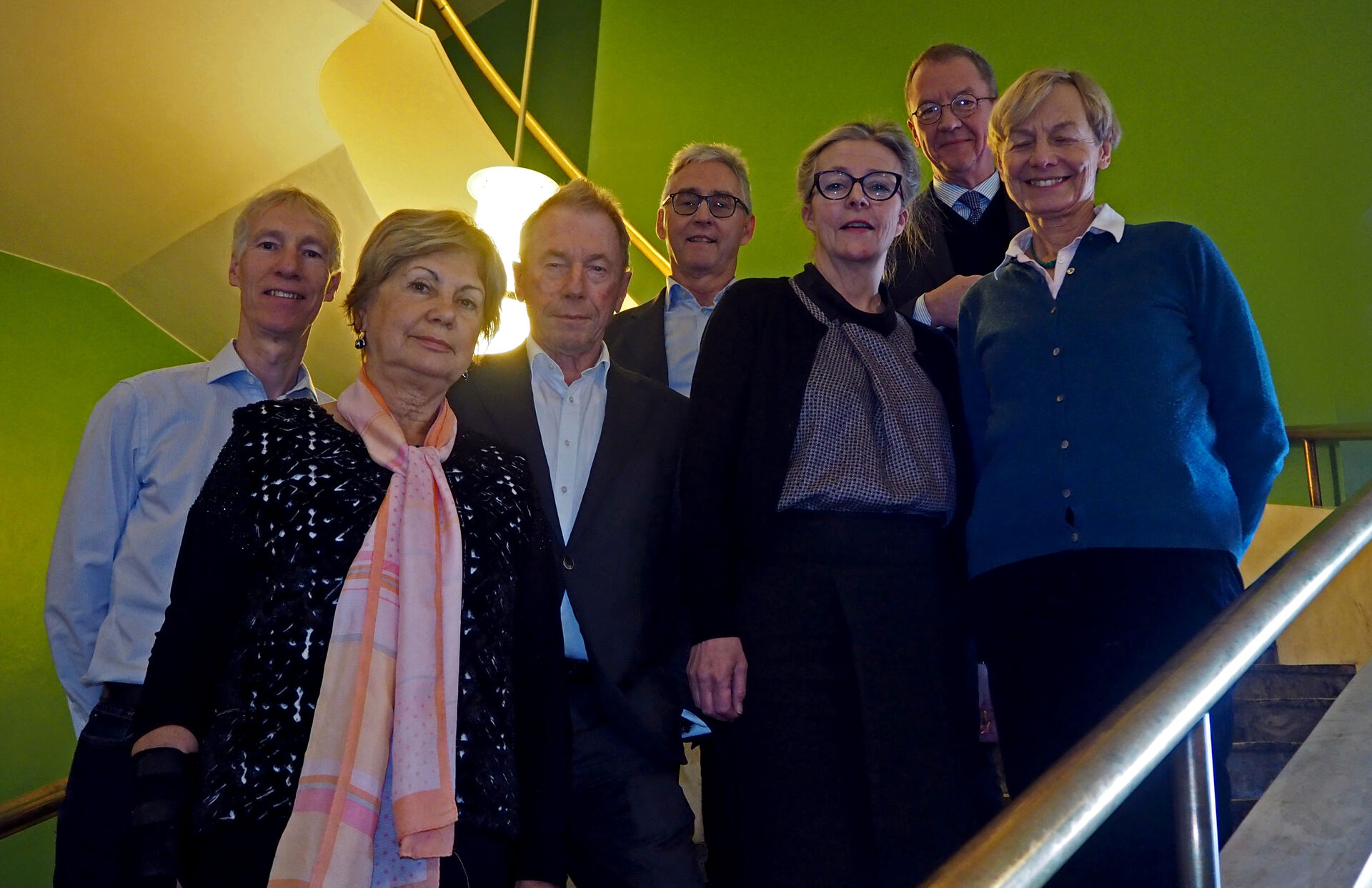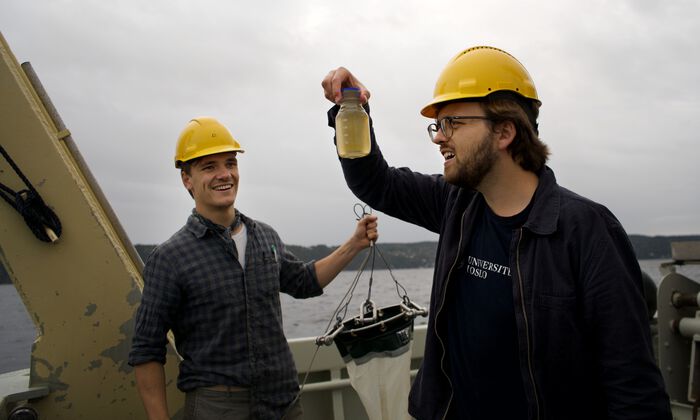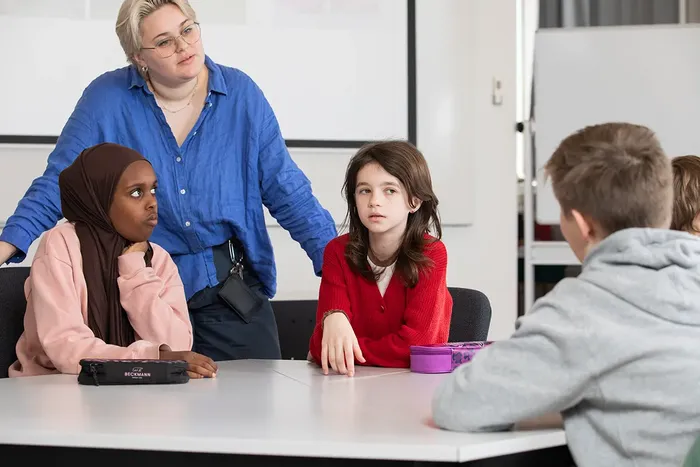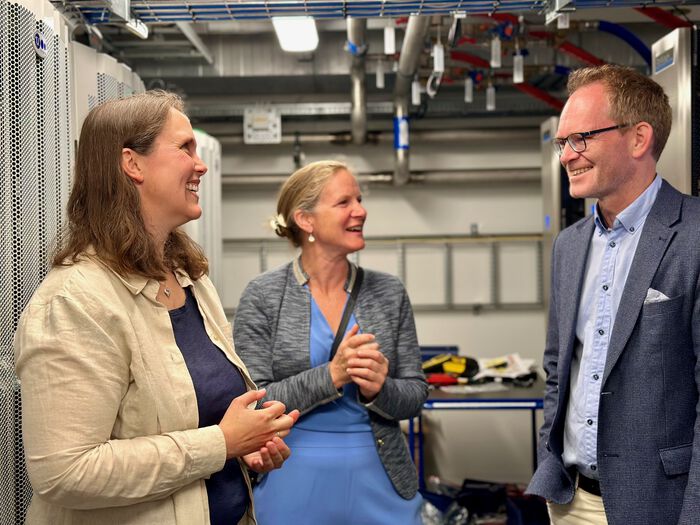Over the last 40 years a larger and larger portion of research is funded by external sources and the competition for these funds is also increasing. Our strategic advisory committee has visited us and we have got many good advices. The main question has been how the faculty shall realize the ambitious goals formulated in our strategy?
Our strategy, "Knowledge development for a changing world - science and technology towards 2030", was launched in February 2019. In the final phase of the work on the strategy, we were very well assisted by our strategic advisory committee consisting of experts from universities abroad and prominent representatives from Norwegian institutions.
This committee, the Strategic Advisory Committee at the Faculty of Mathematics and Natural Sciences (MN-SAC), has now visited us for the second time. Over two days we have discussed the follow-up of the strategy with special emphasis on excellence in science.
The commitee and the 2019 visit
You can see the members of MN-SAC in the picture following this article. The members are (from left in the picture) Professor Ian Horrocks (University of Oxford, UK), Professor Éva Kondorosi (Hungarian Academy of Science, Hungary), Jens Ulltveit-Moe (Investor, Norway), Professor Dan Henningson (KTH, Sweden), Executive Vice President Eli Aamot (SINTEF, Norway), Managing Director Idar Kreutzer (Finance Norway, Norway) and Professor Barbara Romanowicz (University of California, Berkeley, US). At the faculty it is Professor Nils Chr. Stenseth, Vice Dean Solveig Kristensen and Senior Advisor Ingse Noremsaune who have coordinated the work with MN-SAC.
Fruitful days
My very short comment is that we had two very fruitful days with MN-SAC. The good assembly of experts has asked good questions and they have provided us with a number of important comments that we will use in the coming year.
This years program for the visit from MN-SAC consisted of three parts. The first part dealt with some overall issues, the second part consisted of visits to three centers, while MN-SAC in the third part discussed proposals for new centers of excellence with eight research groups.
Some overall issues
After a brief summary of what we have done at the faculty over the past year, we went through ongoing work on strategic initiatives. We discussed the life sciences strategy at the faculty. This work will be presented to UiO's management before Christmas. Furthermore, we had a brief discussion about UiO's road map for research infrastructure and the faculty's plans for establishing a center in data science. We also discussed the sea area initiative "Skagerrak-Kattegat-Oslofjorden". We received many good comments and some demanding questions from MN-SAC.
Visit to centers
MN-SAC first visited the Hylleraas Center, then CEES before the first day of the visit ended with a visit to SIRIUS. This tour was about giving MN-SAC insight into some of our existing efforts/successes. It is impossible to go into detail, but I can assure the readers that the dialogue during each of these visits was very fruitful, both for the center staff itself and for us in the leadership of the faculty.
Review of new ideas
In one year, we will submit new applications for funding from the Research Council of Norway for the establishment of new Centers for Excellences (CoE). We have received 22 sketches and we took the opportunity to present 9 of these to MN-SAC. We split MN-SAC into two groups according to their professional background and used each group as a discussion panel for the applicants. The other 13 sketches will be reviewed in the same way with panels, which is most likely to happen in February 2020.
The feedback from the research groups that got the opportunity to present their proposals to MN-SAC was very good. Many aspects of the input from MN-SAC were of generic nature and valuable to all our CoE applicants. We shall make these aspects available to all applicants. MN-SAC also thought it was interesting to participate in the discussions and they emphasized that it was particularly interesting to participate so early in the process.
Next year
We look forward to the next meeting with MN-SAC, which is scheduled for the last week in October 2020. The program for the 2020 visit has not been set, but it is not unlikely that it will be about how the faculty will develop its collaboration with industry and units in public sector. Moreover, we would also like to address some of the challenges associated with the UN sustainability goals, e.g. research on production and distribution of renewable energy and the challenging energy transition that we will face in the coming years.





